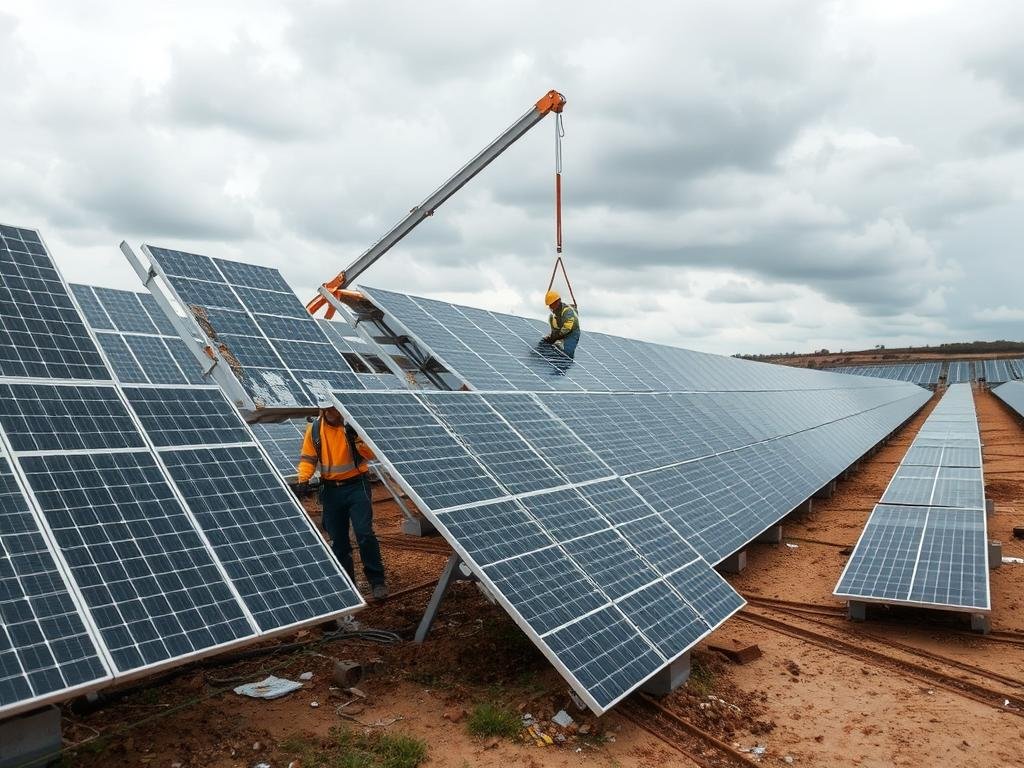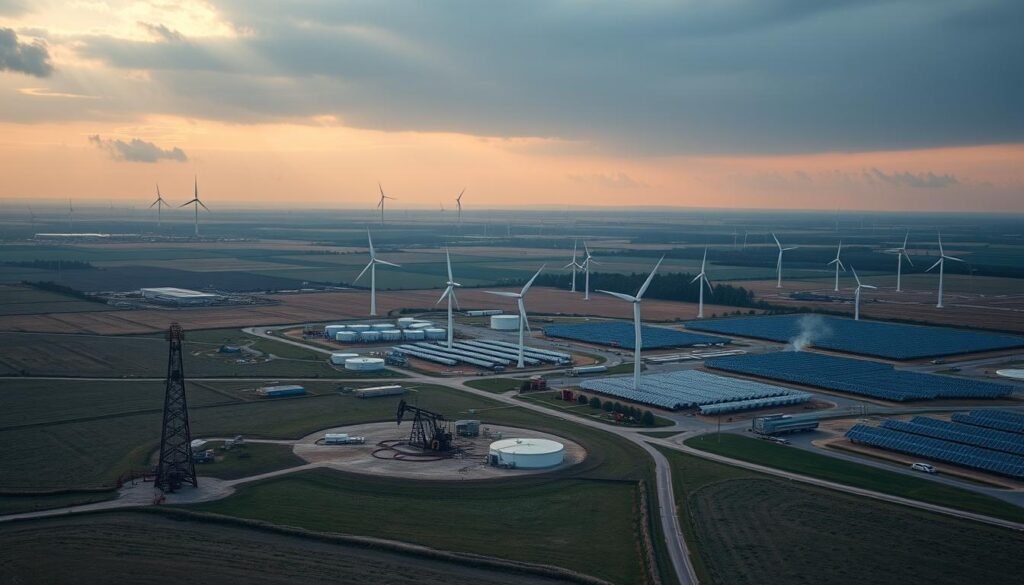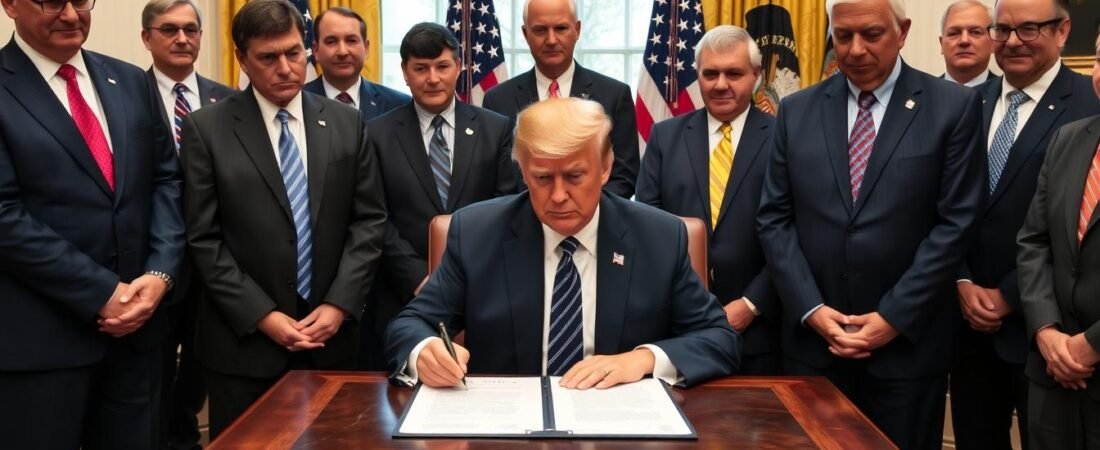President Donald Trump’s “Big Beautiful Bill” represents a pivotal shift in American energy policy, with far-reaching implications for the oil and gas sector. This sweeping legislation aims to reshape the nation’s approach to energy production, environmental regulation, and economic priorities. As the bill moves from congressional approval to presidential signature, stakeholders across the energy landscape are assessing its potential to create what supporters call a “new golden era” for fossil fuels.
The legislation arrives at a critical juncture for America’s energy future, with competing visions for how the country should balance energy security, economic growth, and environmental concerns. Understanding the bill’s provisions and their likely impacts is essential for industry professionals, policymakers, and citizens alike.
Understanding the Big Beautiful Bill
The Republican legislative package known as the “Big Beautiful Bill” has completed its journey through Congress and now awaits President Trump’s signature. This comprehensive legislation contains numerous provisions affecting U.S. energy policy, with significant implications for the oil and gas industry.
Key Oil and Gas Provisions
- Reinstatement of oil and gas lease sales in the Arctic National Wildlife Refuge
- Reduction of oil and gas royalty rates on federal lands from 16.6% to 12.5%
- Elimination of tax credits for electric vehicles and renewable energy
- Streamlined permitting processes for new drilling operations
- Increased access to federal lands for energy development
According to the Atlantic Council, “The legislation cements nuclear energy as a foundational element in the nation’s future energy mix” while also prioritizing natural gas as a key component of America’s energy strategy. The bill reflects a Republican policy view that “ensuring reliable, affordable power in an era of artificial intelligence, electrification, and geopolitical competition requires anchoring national energy strategy in long-term physical and industrial resilience.”
Energy Dominance as Central Goal
The concept of “energy dominance” features prominently in the bill’s framing. This approach emphasizes maximizing domestic production, reducing regulatory barriers, and positioning the United States as a leading global energy exporter. The American Petroleum Institute’s President Mike Sommers stated that “this historic legislation will help usher in a new era of energy dominance by unlocking opportunities for investment, opening lease sales and expanding access to oil and natural gas development.”
Stay Informed on Energy Policy
Get expert analysis on how energy legislation affects markets, businesses, and consumers delivered to your inbox.
Competing Perspectives on the Bill
Supporters’ View
Proponents of the bill argue it will unleash American energy potential by removing regulatory barriers that have constrained production. They point to potential job creation in energy-producing regions and enhanced energy security through reduced dependence on foreign sources.
The legislation is seen as correcting what supporters view as an overemphasis on renewable energy at the expense of traditional fuels. By rebalancing federal policy toward oil and gas, they believe the bill will lead to lower energy costs and greater economic prosperity.

Critics’ Perspective
Opponents characterize the bill as a significant setback for climate policy and environmental protection. They argue it undermines years of progress toward cleaner energy by eliminating incentives for renewable technologies and electric vehicles.
Inside Climate News reports the bill “largely erases the landmark investment in cleaner energy, jobs and communities that a Democratic-led Congress made only three years ago in the Inflation Reduction Act.” Critics warn this approach prioritizes short-term economic gains over long-term environmental sustainability.

Economic Analysis
Economic assessments of the bill’s impact vary widely. The Joint Committee on Taxation estimates that cuts to clean energy tax incentives will save the Treasury $499 billion, offsetting approximately 12% of the legislation’s $4 trillion in tax cuts. However, some analysts project broader economic consequences.
A report from Energy Innovation suggests the bill could lead to significant job losses, “peaking at 900,000 by 2032, of which more than 230,000 would be manufacturing jobs.” This contrasts with the administration’s claims that the legislation will boost economic growth through expanded energy production.
“The bill is a recipe for energy submission rather than energy dominance.”
Environmental and Emissions Implications
Carbon Brief’s analysis of modeling from the Princeton University REPEAT Project reveals significant climate implications: “Trump’s dismantling of climate policy means the US will add an extra 7bn tonnes of emissions to the atmosphere from now until 2030, compared to meeting its former climate pledge under the Paris Agreement.”
Under the new policy framework, U.S. emissions are projected to decrease by only 3% from current levels by 2030—effectively flatlining rather than achieving the 40% reduction needed to meet previous climate commitments. This represents approximately 2 billion tonnes of additional greenhouse gas emissions annually, equivalent to about 4% of current global emissions.
Renewable Energy Sector Impact
The REPEAT Project estimates that “cumulative new solar capacity additions will drop by 29 gigawatts (GW) by 2030 and around 140GW by 2035. For wind power, the decrease is set to be 43GW by 2030 and 160GW by 2035.” This significant reduction in clean energy deployment will likely have cascading effects throughout the power sector.
While some renewable projects may proceed without federal support, developers will face additional challenges from other Trump administration policies, such as restrictions on federal windfarm approvals.
The bill rescinds the Inflation Reduction Act’s Environmental and Climate Justice Program, which provided grants for community-based initiatives in disadvantaged communities. This eliminates funding for pollution notification systems, lead pipe replacement, and other environmental health projects.
State-Level Implications
Texas

As the nation’s largest oil producer, Texas stands to benefit significantly from the bill’s provisions supporting fossil fuel development. The state’s extensive shale formations in the Permian Basin may see accelerated drilling activity under the new regulatory framework.
However, Texas has also become a leader in renewable energy, particularly wind power. The legislation’s impact on clean energy tax credits could slow the growth of this sector, creating a mixed economic picture for the state.
Alaska

Alaska receives special attention in the bill, with provisions reinstating oil and gas lease sales in the Arctic National Wildlife Refuge. The state will receive a majority of royalties from this new production, providing a potential economic boost to state coffers.
Senator Lisa Murkowski of Alaska, initially hesitant about aspects of the bill, ultimately supported it after securing these provisions, highlighting the importance of energy development to the state’s economy.
Wyoming

Wyoming’s coal industry receives support through the bill’s provisions for metallurgical coal tax credits and increased access to federal coal reserves. The legislation authorizes mining on federal lands and makes 4 million acres of known coal reserves available for leasing.
However, analysis for the Clean Energy Buyers Association suggests Wyoming may face electricity price increases of up to 30% over the next year due to changes in generation capacity incentives.
The state-level impacts extend beyond these examples, with energy-producing states generally seeing potential economic benefits from expanded production, while states that have invested heavily in renewable energy may face challenges adapting to the new policy landscape.
Regional Energy Policy Updates
Get specialized analysis on how the Big Beautiful Bill affects energy markets in your state or region.
Consumer and Market Effects

Energy Prices
Despite claims that the legislation will lower energy costs, several analyses suggest consumers may actually face higher prices. REPEAT estimates “household energy costs are likely to be $165 higher in 2030 and more than $280 higher by 2035” following the bill’s implementation.
This increase stems from multiple factors, including fewer electric vehicles leading to higher gasoline consumption and prices, as well as slower construction of renewable energy projects as power demand increases. Without tax credits to boost new generation capacity, residential electricity prices are projected to increase by 7% by 2026 for the average U.S. customer.
Electric Vehicle Market
One of the most immediate consumer impacts will be the elimination of the $7,500 tax credit for new electric vehicles and the $4,000 credit for used electric vehicles, scheduled to end on September 30. This creates a summer deadline for consumers considering an EV purchase.
Tesla, with 10 of the 29 models currently eligible for the credit, stands to be significantly affected by this change. The company’s CEO, Elon Musk, had urged lawmakers to reject the bill despite his previous association with the Trump administration.
| Energy Type | Short-term Price Impact | Long-term Price Projection | Consumer Implications |
| Electricity | 7% increase by 2026 | Continued upward pressure | Higher utility bills, particularly in states with renewable energy transitions |
| Gasoline | Minimal immediate change | Potential decrease with increased production | Continued dependence on fossil fuel vehicles |
| Natural Gas | Stable to slight decrease | Potential volatility with increased exports | Mixed impact on heating and electricity costs |
Comparing the Big Beautiful Bill to Previous Energy Policies
The Big Beautiful Bill represents a significant departure from the energy policies of the Biden administration, particularly the Inflation Reduction Act (IRA). While the IRA invested heavily in clean energy and emissions reduction, the new legislation prioritizes traditional fossil fuels and removes many incentives for alternative energy sources.
Potential Benefits
- Increased domestic oil and gas production
- Potential job creation in fossil fuel sectors
- Reduced regulatory compliance costs for energy companies
- Greater access to federal lands for resource development
- Support for nuclear and geothermal power development
Potential Drawbacks
- Projected increase in greenhouse gas emissions
- Higher energy costs for many consumers
- Reduced investment in renewable energy infrastructure
- Loss of environmental justice program funding
- Potential job losses in clean energy manufacturing
Unlike previous energy policy shifts, the Big Beautiful Bill represents a comprehensive reversal rather than an incremental change. The legislation not only removes incentives for clean energy but actively redirects support toward fossil fuel development, marking one of the most significant energy policy pivots in recent U.S. history.
Frequently Asked Questions
How does the Big Beautiful Bill differ from Biden’s Inflation Reduction Act?
The Big Beautiful Bill effectively reverses many key provisions of the Inflation Reduction Act. While the IRA provided substantial tax credits and incentives for renewable energy, electric vehicles, and clean manufacturing, the new legislation eliminates most of these supports. It also lowers royalty rates for fossil fuel production on federal lands and opens additional areas for oil, gas, and coal development.
Will this bill lower gas prices?
Despite claims that increased domestic production will lower fuel prices, most analyses suggest the bill’s overall impact on gasoline prices is uncertain. While expanded production could potentially increase supply, other factors such as global oil markets, OPEC+ decisions, and international conflicts typically have greater influence on pump prices. Some analyses actually project higher overall energy costs for consumers under the new policy framework.
What happens to existing renewable energy projects?
Existing renewable energy projects that have already secured funding or tax credits under previous legislation should be able to proceed. However, the bill creates a tight timeline for new projects to qualify for remaining incentives, with most needing to begin construction within the next year. This is expected to create a short-term rush followed by a significant slowdown in new renewable energy development.
How will the bill affect jobs in the energy sector?
The employment impact is likely to be mixed across different energy subsectors. While oil, gas, and coal operations may see job growth, analyses from organizations like Energy Innovation project significant job losses in clean energy manufacturing and construction. Their report estimates job losses could peak at 900,000 by 2032, with over 230,000 in manufacturing specifically.
What are the environmental risks associated with the bill?
Environmental concerns include increased greenhouse gas emissions, potential impacts on sensitive ecosystems from expanded drilling (particularly in the Arctic National Wildlife Refuge), and reduced funding for environmental justice initiatives. The Princeton University REPEAT Project estimates the bill will result in an additional 7 billion tonnes of emissions by 2030 compared to the previous policy trajectory.

Key Takeaways and Future Outlook

The Big Beautiful Bill represents a fundamental reorientation of U.S. energy policy, prioritizing fossil fuel development and removing many incentives for renewable energy. This shift aligns with the Trump administration’s goal of “energy dominance” but raises questions about long-term environmental and economic consequences.
As Landon Derentz of the Atlantic Council notes, “the legislation is only a starting point.” The bill’s effectiveness in achieving its stated goals will depend on additional policy actions, particularly around permitting reform and infrastructure development. Without streamlined processes for building out transmission, advanced nuclear, gas infrastructure, and geothermal projects, “the nation risks falling short of the very objectives this bill sets in motion.”
The coming years will reveal whether this legislative approach delivers on its promises of energy security and economic growth, or whether, as critics suggest, it sacrifices long-term sustainability for short-term gains. As the energy landscape continues to evolve, both domestically and globally, the impacts of this pivotal policy shift will reverberate throughout the economy, environment, and international relations.
Is short-term energy dominance worth potential long-term climate consequences? This fundamental question will shape America’s energy future for decades to come.
Stay Informed on Energy Policy Developments
Get expert analysis and updates on how the Big Beautiful Bill implementation affects energy markets, businesses, and consumers.
